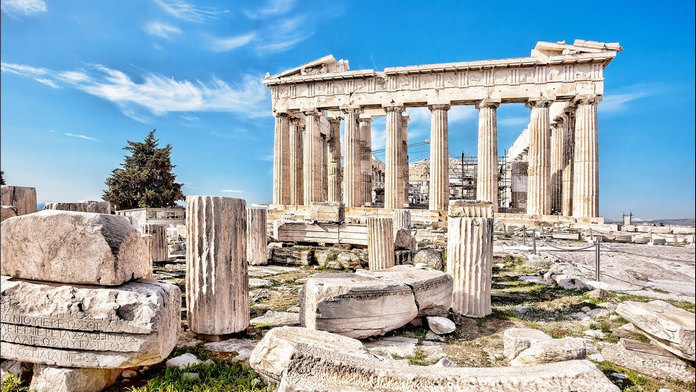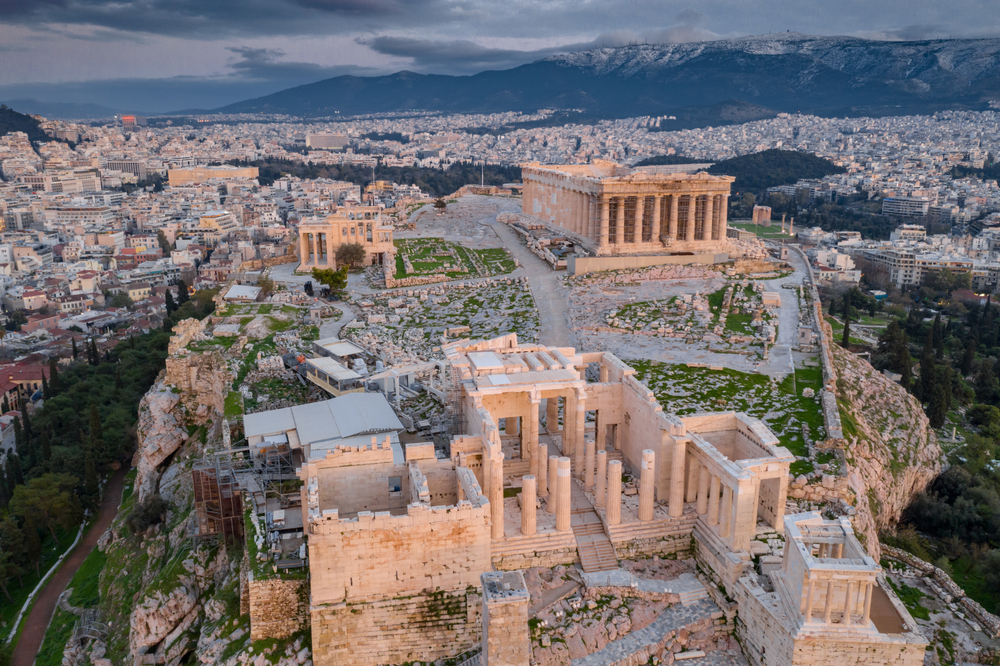The Acropolis of Athens is definitely the most popular site in the city. Every year approximately seven million tourists visit it.
It’s a place overflowing with myths, stories, and interesting historical facts. Here are 10 little-known facts about this UNESCO World Heritage Monument.

1. It Was Built in Prehistoric Times
Acropolis is 2460 years old. It has been inhabited since the 4th century BC. The Athenians inherited the ruins of the Mycenaean Acropolis A Mycenaean tomb on the Acropolis also became known as the final resting place of Cecrops, Athenian king thus making the Acropolis the most sacred place in Athens.
2. The Parthenon was a Temple, Church, and Even a Mosque during its Lifetime
When it was built, it was initially a temple dedicated to the Greek goddess Athena. When the Christians took over it, it became a church. When Turks invaded Greece it was turned into a mosque.

3. It was Blown Up.
During the war in the 1600s between the Venetians and the Turks, Parthenon was used as a warehouse for storing explosives. They went off at one point and blew up the interior of the building.
4. A Huge Statue of Athena Stood on the Acropolis
During ancient times a colossal bronze statue stood on the ACropolis. The statue was the work of Phidias and it was built to thank the goddess for the win over the Persians in Marathon.
5. The Acropolis was a Colorful Place
Many believe that the ancient statues and monuments were always white or grey the way we see them now. However, that’s not the case. The Greeks loved the color and used to color their building and monument using natural pigment. The same thing happened with Parthenon.

6. The Statues Above the Columns were Handcarved
One side shows the battle between the gods and the giants while the other depicts Athena at birth, the fighting between Athena and Poseidon, etc. These are all the carvings of the Parthenon.
7. Greece Wants Their Carvings Back
Original carvings are scattered all over the world at the moment. You can find them in the Louvre, British Museum, National Museum of Copenhagen.
They are also known as the Elgin Marbles. Over the past 150 years, Greece has been trying to get them back but unfortunately without success.
8. The Carvings were Carried Away and Shipwrecked
During the 1800s, a British nobleman Lord Elgin convinced the Turks to let him take some of the carvings to England. One of the boats sank and many of the carvings were left on the seafloor. Ever since the carvings were known as the Elgin marbles.
9. The Rocks on the Acropolis are Slippery
Over the centuries all the visitors and the foot traffic smoothed down the ground making it slippery. So when you visit it, make sure you wear comfortable shoes and pay attention to where you’re stepping foot.





